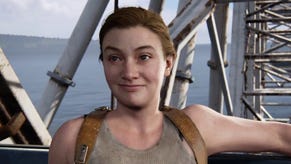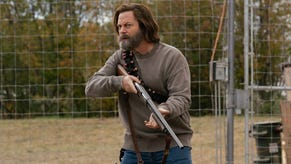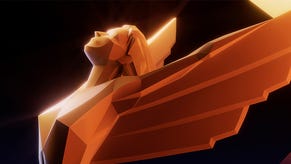Digital Foundry vs. The Last of Us demo
Analysis of our first hands-on with Naughty Dog's final PS3 game.
One of the most exciting games of this console generation is almost upon us. The Last of Us - available to buy in a couple of weeks - is the final PlayStation 3 title from Naughty Dog, a last hurrah for the current-gen Sony hardware before the team moves on to the cutting-edge PS4. You can play a sampler of the new game now, provided you own God of War: Ascension, which includes a download link for the demo.
Lasting around 15 minutes in total, the demo for The Last of Us sees players exploring a decaying building in the dead of night while making their way through a city that's home to the infected. In this brief segment - set just a few hours into the final game - emphasis is placed firmly on survival horror. There is only a limited range of weaponry, and ample time is spent exploring in the dark, away from direct combat.
It's only a small segment of the game, but it is clear that The Last of Us has a distinctly different feel than Naughty Dog's previous works, despite retaining the developer's unique art style. In line with the Uncharted titles, the attention to detail is impressive, but the aesthetic is defined by a far bleaker tone: rubble, litter and broken furniture are scattered across the ground, along with the partially decomposed remains of infected humans, and splatters of blood where a struggle has ensued.
From a technical perspective, The Last of Us renders natively in 720p, featuring what seems to be a more refined version of the post-process anti-aliasing solution used in Naughty Dog's last game, Uncharted 3. There are other similarities with Drake's last outing: the artwork draws heavily on hand-painted textures, and we also see a distinct use of both pre-baked and dynamic effects, particularly where light and shadow is concerned.
However, compared to Uncharted 3, ambience and atmosphere plays a much bigger part in The Last of Us in terms of immersing the player into a world designed to be more realistic than the one found in Nathan Drake's colourful, brash adventures. The clever use of post-process effects, dynamic lighting, reflections and excellent sound design create an eerie feel that is both bleak and hostile.
The initial, somewhat unsettling calm at the beginning of the demo is broken by flashes of thunder that illuminate the environment and by the distant growls of the infected, signifying that danger is never that far away. The lighting model in particular is very impressive - when venturing inside a dilapidated building, the environment is illuminated just by the characters' torches, both of which cast shadows from various lit objects, and of course the characters themselves, creating the illusion of indirect light bouncing from one surface to another. It's just one example of the beautiful effects work at play in The Last of Us.
"The Last of Us has a darker, more bleak feel than Naughty Dog's previous works, despite retaining the developer's unique art style."
Subtleties are absolutely at the forefront in The Last of Us, and this funnels down to the gameplay. Exploration and stealth - rather than combat - is the core emphasis in the demo, with players encouraged to find less direct ways of overcoming the pockets of infected dotted about the area - a theme that clearly differentiates Naughty Dog's new offering from the Uncharted games. The reasonably sedate pace of the demo is actually beneficial in terms of performance, although that's not to say the engine isn't stressed in other ways: the range of post-process effects, animation and lighting that are crucial in generating the core look and feel of the game also have an impact on how well the game performs.
For the most part, during our short time with the demo we only encountered a few small dips in frame-rate when traversing the environment, firmly restricted to more open areas when multiple light sources are in play - the torches carried by the protagonists that illuminate their surroundings cause minor fluctuations to occur, although it's not always immediately obvious to the eye when navigating through the darkness. It's only in fast motion or in swift camera-panning movements that any judder is apparent; otherwise the demo maintains a nearly solid 30FPS outside of combat without any issues.
When fights do break out, they are suitably brutal, with visceral hand-to-hand combat intensified by the use of object blur and depth of field that places the focus on the action. Animations are smoothly blended together and have considerable weight to them - particularly in terms of the blows delivered via a melee weapon. The force of these blows is emphasised by the fact that these often makeshift weapons shatter after a few uses. It's clear that these excursions against the infected have a more noticeable effect on smoothness than traversal: hand-to-hand combat and gun battles against a few enemies result in frame-rate drops down to around the mid-twenties, revealing some mild judder. The use of object blur does help to reduce these side effects somewhat, but not entirely when fluidity is more heavily compromised.
"Frame-rate during traversal is reasonably solid, but noticeable judder is introduced during combat."
Thankfully, there's no tearing to be found. The Last of Us adopts the same approach to banishing screen-tear as the last two Uncharted games: triple-buffering is used, where an additional frame is held in reserve during gameplay. As a result, if a particular frame takes too long to render, it is replaced with the clean reserve frame rather than the current image being flipped mid-refresh, causing unwanted tearing. While this does create some additional latency in the controls, it isn't something that negatively affects gameplay when frame-rates are stable, although response does feel heavier when the engine is struggling.
Looking forward - what can we expect?
Of course, the demo represents just a small portion of the game in general, and from what we've seen in the trailers and developer diaries, there's far more to The Last of Us than simple skirmishes against small pockets of infected: there's a bigger world out there where the stakes are higher. The latest footage offers glimpses of locations that feature an even greater sense of scale than anything we've seen before, along with scenes that utilise a greater number of effects and enemies.
It begs the question: how well will the engine cope in dealing with more demanding scenes? Considering the clear graphical boost over the already outstanding Uncharted 3, it will certainly be interesting to find out just how Naughty Dog has refined and tailored its core technology around the differing requirements of The Last of Us.
In the demo, the impact of the frame-rate drops appears to be fairly contained in the short sequences we've encountered so far, and the focus on stealth over action is likely to help in this regard in the finished game - but how this translates across to the final release remains to be seen. The Last of Us reviews will be hitting shortly, but we'll be holding back our full technical analysis of the game until after its 14th June release date.













